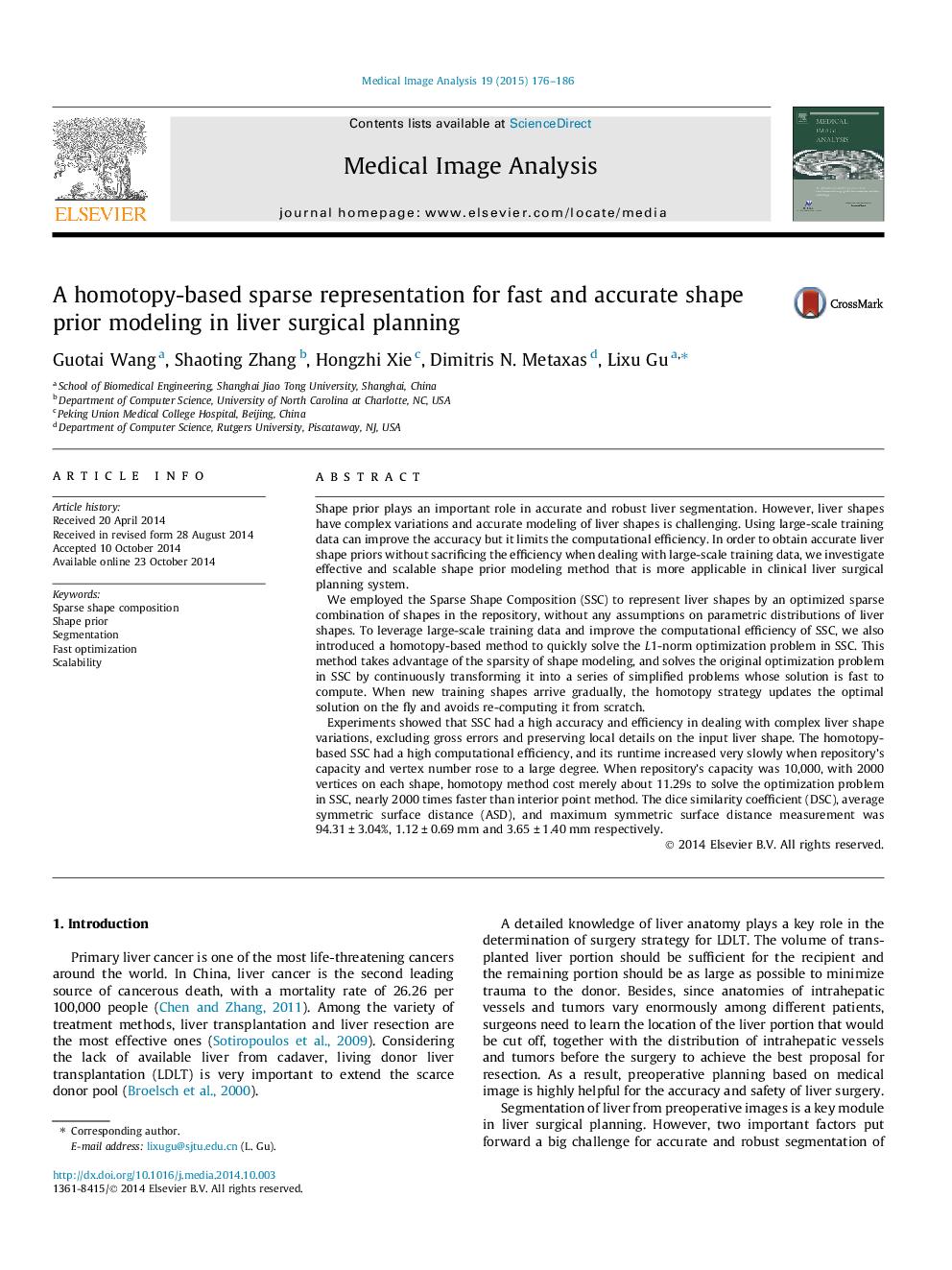| کد مقاله | کد نشریه | سال انتشار | مقاله انگلیسی | نسخه تمام متن |
|---|---|---|---|---|
| 443902 | 692805 | 2015 | 11 صفحه PDF | دانلود رایگان |
• We proposed an homotopy-based SSC to model shape priors accurately and efficiently.
• The computational efficiency was proportional to the sparsity of a problem.
• The runtime increased very slowly when training data rose to a large scale.
• More training shapes and vertex numbers can improve accuracy, without losing speed.
• Our method can update the optimal solution on the fly.
Shape prior plays an important role in accurate and robust liver segmentation. However, liver shapes have complex variations and accurate modeling of liver shapes is challenging. Using large-scale training data can improve the accuracy but it limits the computational efficiency. In order to obtain accurate liver shape priors without sacrificing the efficiency when dealing with large-scale training data, we investigate effective and scalable shape prior modeling method that is more applicable in clinical liver surgical planning system.We employed the Sparse Shape Composition (SSC) to represent liver shapes by an optimized sparse combination of shapes in the repository, without any assumptions on parametric distributions of liver shapes. To leverage large-scale training data and improve the computational efficiency of SSC, we also introduced a homotopy-based method to quickly solve the L1L1-norm optimization problem in SSC. This method takes advantage of the sparsity of shape modeling, and solves the original optimization problem in SSC by continuously transforming it into a series of simplified problems whose solution is fast to compute. When new training shapes arrive gradually, the homotopy strategy updates the optimal solution on the fly and avoids re-computing it from scratch.Experiments showed that SSC had a high accuracy and efficiency in dealing with complex liver shape variations, excluding gross errors and preserving local details on the input liver shape. The homotopy-based SSC had a high computational efficiency, and its runtime increased very slowly when repository’s capacity and vertex number rose to a large degree. When repository’s capacity was 10,000, with 2000 vertices on each shape, homotopy method cost merely about 11.29s to solve the optimization problem in SSC, nearly 2000 times faster than interior point method. The dice similarity coefficient (DSC), average symmetric surface distance (ASD), and maximum symmetric surface distance measurement was 94.31 ± 3.04%, 1.12 ± 0.69 mm and 3.65 ± 1.40 mm respectively.
Figure optionsDownload high-quality image (105 K)Download as PowerPoint slide
Journal: Medical Image Analysis - Volume 19, Issue 1, January 2015, Pages 176–186
